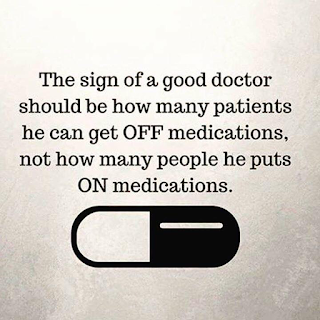Our bodies were built for periodic cycles of "feast and famine". Fasting has a number of health benefits, including improved cardiovascular health, gene repair, longevity and reduced cancer risks. When we are always eating (feast mode) our body forgoes much of its repair and rejuvenation programming. This is done primarily while we sleep. While it might seem that to "starve" our bodies over a long term fasting cycle is a good idea, it is actually the opposite. We begin to store "fat", thinking we are in the "famine" mode. However, intermittent fasting mimics the cycles between feast and famine, which produces a number of biochemical benefits and helps our bodies operate.
Health Benefits of Intermittent Fasting:
*Normalizes insulin and leptin sensitivity, which boosts mitochondrial energy.
*Normalizes ghrelin levels (also known as the hunger hormone).
*Promotes HGH (human growth hormone) production.
Research has shown fasting can raise HGH in women by 1300%, in men by 2000%. HGH is plays an important role in health, fitness and slowing the aging process. HGH is also a fat-burning hormone, which explains why Intermittent fasting is so effective in weight loss.
* Lowers Triglycerides and reduces Oxidative stress.
Most people think they cannot go without eating for very long. One of the easiest, most effective and safe ways to fast is the 16/8 fast. Using your sleep cycle as the kick start, finish dinner around 6 pm and don't eat anything until mid-morning (10 am). Of course don't forget to keep drinking your water! You can also have tea or coffee but try to limit the sugar, so that insulin and leptin sensitivity can work properly during the fast. According to Dr. Amy Shah, women need only fast every other day for the best results. Read more on that here.
While Ayurveda recommends that everyone should go for 12 hours without eating between dinner and breakfast for optimal health, intermittent fasting can be done once a week or one weekend per month. Of course, this is all depends on if you are in good physical health to do so and you know your predominant "dosha", which you can read more about in this article by Dr. Kulreet Chaudhary. Dr. Chaudhary has written a well respected book called The Prime, which I am anxious to read.
Remember that the digestion process takes up a lot of your body's attention and energy. When we are constantly eating and digesting, we have less time and resources to focus on maintenance and repair. A body that is healthy and working efficiently makes it easier to lose weight and keep it off.
Please do your own research and consult your trusted health care practitioner before making any dietary changes.
Have a great week.
Be kind.
Judd






